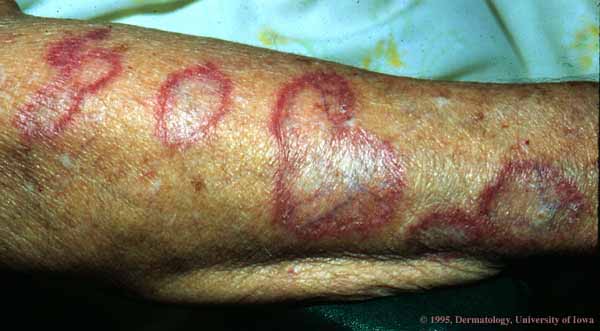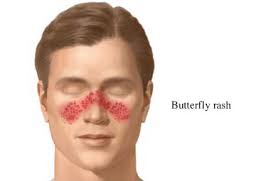Dear Dr. Deena,
What is the cause of lupus?
Regards,
Anonymous
Thanks for another great question, Anonymous. To continue with the questions you have asked, below I have addressed what the causes of SLE might be, including other forms of lupus that exist. It is important to differentiate between these forms because treatment is quite different for each.
For more information on Systemic Lupus Erythematosus, visit my previous post: What is SLE?
The cause of SLE is unknown. It is most commonly seen in woman of child-bearing age and is generally diagnosed between age 20-40. Some researchers believe that development of SLE can be hereditary, but recent studies have found that less than 3% of children develop SLE if their mother has SLE.
Lupus is more common among African Americans, Asians and Latinos – this may be due to certain genes that are present in these communities; however, research is currently being performed to truly prove the genetic risk factors for development of SLE.
SLE is usually diagnosed when a patient develops symptoms after being exposed to a certain trigger. These triggers might include: increased sun exposure, certain antibiotics, a recent infection, a major emotional or stressful event, pregnancy, sleep deprivation and/or exhaustion.
There are 2 additional forms of lupus in adults that must be differentiated from SLE. These include Drug-Induced Lupus and Cutaneous Lupus Erythematosus.
“Drug-Induced Lupus” is a disease where a patient develops symptoms similar to SLE, that are caused by the body’s reaction to certain medications. Once the medication is stopped, the patient’s lupus-like symptoms improve and disappear over weeks to months. There are at least 40 medications that are associated with Drug-Induced Lupus, the most common ones known to cause lupus-like symptoms include: procainamide (used to treat abnormal heart rhythms) and hydralazine (used to treat high blood pressure).
Cutaneous Lupus Erythematosus (CLE) is a form of lupus that ONLY affects the skin. Roughly 10% of those with CLE will go on to develop SLE. Rashes related to CLE are called “discoid rashes” because they are circular and look like discs. See image below:

Patients with CLE may also develop a “butterfly rash” with redness over the nose and cheeks. Many patients with CLE will notice that their symptoms are worse with exposure to the sun. Below is the pattern of a butterfly rash:

Hope these posts were helpful! In the upcoming week I will talk about one of the lifesaving drugs that is used to treat symptoms of SLE - Steroids.
As always please feel free to leave comments below, and continue to email your questions to DoctorDeenaMD@gmail.com.
**PLEASE REMEMBER IF YOU HAVE ANY QUESTIONS OR CONCERNS ABOUT YOUR HEALTH AND/OR BEFORE STARTING OR STOPPING ANY TREATMENT OR ACTING UPON INFORMATION CONTAINED ON THE SITE, YOU SHOULD CONTACT YOUR OWN PHYSICIAN OR HEALTH-CARE PROVIDER**
What is the cause of lupus?
Regards,
Anonymous
Thanks for another great question, Anonymous. To continue with the questions you have asked, below I have addressed what the causes of SLE might be, including other forms of lupus that exist. It is important to differentiate between these forms because treatment is quite different for each.
The cause of SLE is unknown. It is most commonly seen in woman of child-bearing age and is generally diagnosed between age 20-40. Some researchers believe that development of SLE can be hereditary, but recent studies have found that less than 3% of children develop SLE if their mother has SLE.
Lupus is more common among African Americans, Asians and Latinos – this may be due to certain genes that are present in these communities; however, research is currently being performed to truly prove the genetic risk factors for development of SLE.
SLE is usually diagnosed when a patient develops symptoms after being exposed to a certain trigger. These triggers might include: increased sun exposure, certain antibiotics, a recent infection, a major emotional or stressful event, pregnancy, sleep deprivation and/or exhaustion.
There are 2 additional forms of lupus in adults that must be differentiated from SLE. These include Drug-Induced Lupus and Cutaneous Lupus Erythematosus.
“Drug-Induced Lupus” is a disease where a patient develops symptoms similar to SLE, that are caused by the body’s reaction to certain medications. Once the medication is stopped, the patient’s lupus-like symptoms improve and disappear over weeks to months. There are at least 40 medications that are associated with Drug-Induced Lupus, the most common ones known to cause lupus-like symptoms include: procainamide (used to treat abnormal heart rhythms) and hydralazine (used to treat high blood pressure).
Cutaneous Lupus Erythematosus (CLE) is a form of lupus that ONLY affects the skin. Roughly 10% of those with CLE will go on to develop SLE. Rashes related to CLE are called “discoid rashes” because they are circular and look like discs. See image below:

image taken from http://hardinmd.lib.uiowa.edu/ui/tray/DLE-003.html
Hope these posts were helpful! In the upcoming week I will talk about one of the lifesaving drugs that is used to treat symptoms of SLE - Steroids.
As always please feel free to leave comments below, and continue to email your questions to DoctorDeenaMD@gmail.com.
**PLEASE REMEMBER IF YOU HAVE ANY QUESTIONS OR CONCERNS ABOUT YOUR HEALTH AND/OR BEFORE STARTING OR STOPPING ANY TREATMENT OR ACTING UPON INFORMATION CONTAINED ON THE SITE, YOU SHOULD CONTACT YOUR OWN PHYSICIAN OR HEALTH-CARE PROVIDER**